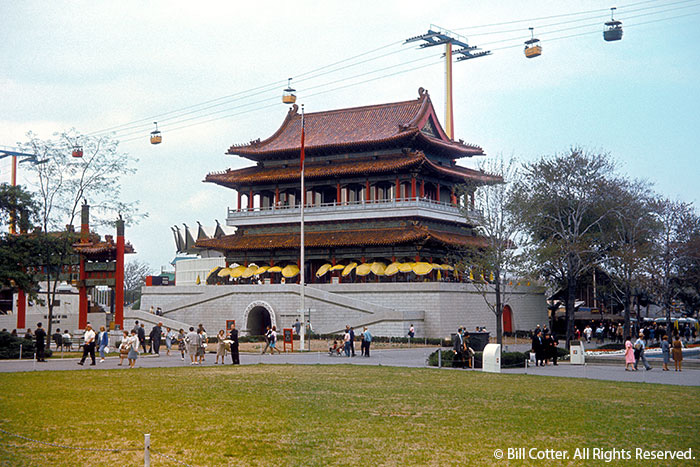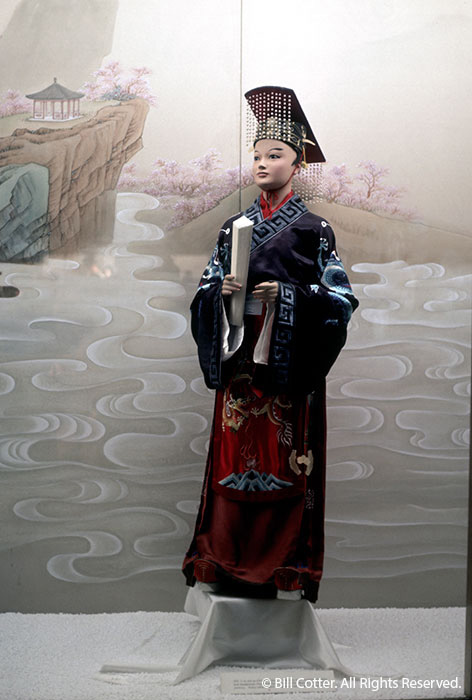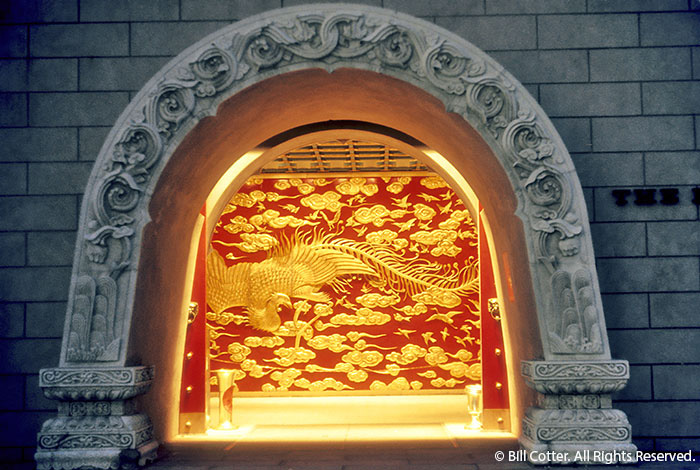Republic of China
The opulent red and gold pavilion is a reproduction of a traditional imperial palace - the first of its kind ever been erected in the Western hemisphere. Within are exhibits of ancient and modern Chinese culture, and many rare and beautiful art objects: bronzes, porcelains, jades, silks and carvings in ivory, wood and stone. Taiwan's scenery, its land reform and industry are pictured, and a display of the evolution of Chinese money begins with coins dating from 9 A.D.

Imperial Palace. All the components of the pavilion except its structural steel were handmade in Taiwan and are in the traditional of imperial architecture. These include painted wall and ceiling panels, roof tiles and ceremonial gate.
China was one of the more photographed pavilions at the Fair. Not only was the building quite picturesque, but it was also in a prime location facing the Unisphere. (CD #TBD Set 325 #6)

Ancient Art. Most precious among the many richly carved objects in the third-floor museum is a 15-inch-high stone monster, with the head of a lion and a semihuman body, perfectly preserved from the Shang Dynasty (1776-1122 B.C.). Among the bronzes are a wine cup from the same dynasty, and bells dating from 1122-150 B.C. Other features are a jade incense burner and a rhinoceros horn cup carved with dragons. (CD #23 Set 123 #23)

The pavilion was also home to a very popular Chinese restaurant, which received positive reviews for both the food and the decor. The quality of the workmanship can be seen in this night view of the pavilion's main entrance. (CD #58 Set 246 #12)
Want more information on the China pavilion?
11-29-62 - Groundbreaking booklet
Press Releases
FR209 - All-Star Musical Variety Show
FR210 - "China Assignment" Brings Award to World's Fair Pinkerton
WFPR1 - Madame Chiang Kai-Shek to visit
WFPR2 - Madame Chiang Kai-Shek schedule
